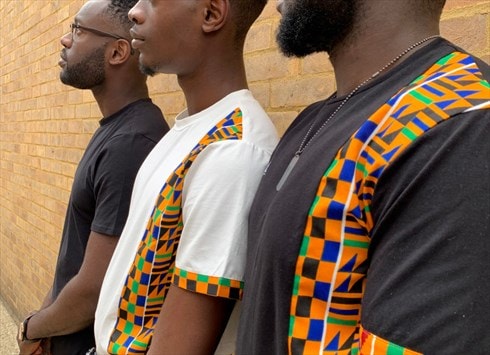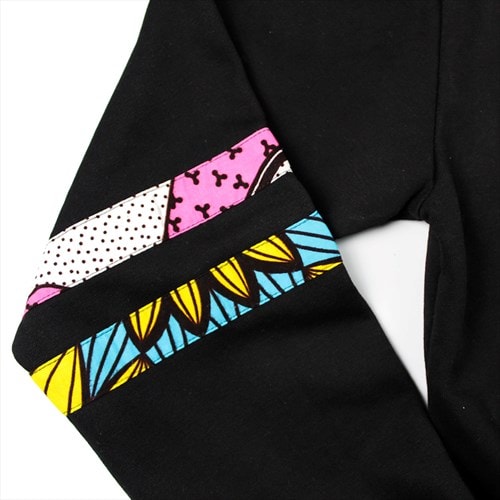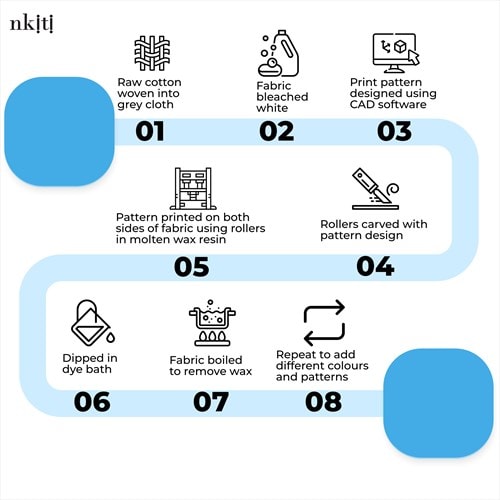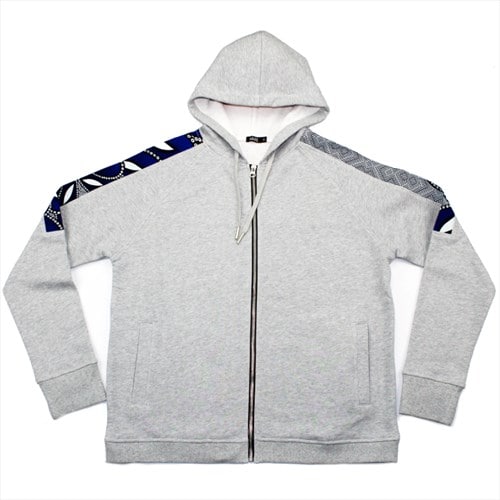
 Luton, UK
Luton, UK
We are a UK based clothing designer that specialise in designing casual African wear. Our vision is...
What is African Print Fabric?
African Print fabrics can be referred to as Ankara, African Wax print, Dutch Wax print and Hollandais. They are typically bold and colourful fabrics, displaying vibrant patterns; from motifs of a fan to ones of flowers. The process of creating an African Print fabric is inspired by the Indonesian method of wax-resist cloth dyeing called Batik. What we now know as African Print is a derivative of this technique.
A bit of history and cultural context
Due to the European legacy of colonisation in Indonesia, the batik technique was adapted and mechanised by the Dutch who then mass produced ankara fabrics. They eventually introduced it to the African continent through trade, military mobilisation as well as missionaries. Hence, the fact that it is often called Hollandais or Dutch Wax.
Since then, African print fabrics have taken on a life of their own in the continent of Africa. As the fabrics are predominantly bought by Africans, it has now been adopted into our culture. So much so that we are creating our own kinds of prints, naming them, and in some Igbo tribes, they’re used as a means of communication.
Today, they are staples in many African households, especially in West Africa, where these prints are used to create custom made clothing for special occasions like weddings, birthdays, church services and more. For the most part, when these fabrics are made into clothing items, they are statement pieces and typically worn as formal and occasion wear.
As a brand, nkịtị takes a slightly different approach, with the aim of blending these African print fabrics with everyday casual wear. This is an atypical use of these fabrics which brings a certain uniqueness to our clothing.

How is ankara fabric made?
As mentioned above, the ankara fabric manufacturing process has its roots in an Indonesian dye technique called Batik.
In batik, molten wax is used to draw patterns across the fabric using a pen-like tool called a canting. This tool is used to create beautifully detailed patterns that make the fabric distinctive. The fabric is then soaked in a dye bath which colours the entire fabric apart from the areas with wax. The wax is said to ‘resist’ the dye, which is why the batik process is known as a wax-resist dye technique. The fabric is dried and boiled to remove the wax. The process is repeated for each additional pattern and colour. By the end of the process, what was once a plain fabric is transformed into a masterpiece.
This process has since been automated and mechanised as technological advancements have swept through the textiles industry, but the essence remains the same. The patterns are designed using Computer Aided Design (CAD) software – instead of by hand – and the wax is applied using copper rollers etched with the pattern design.

How are the clothes at Nkịtị made?
We sell a range of products, jumpers, t-shirts and some classic bomber jackets. You’ve probably noticed the variety in the prints, as well as the fact that most of our products are a mixture of a fabric, such as cotton or polyester, and ankara print. The blend of fabric and ankara is what allows us to achieve our unique designs, capturing that “everyday” look in the simplicity of the design. However, it brings additional complications in the design process as we have to account for the different tensile strengths and elasticities in the different fabrics.
We love the blend of African print fabric in our designs and it is particularly exciting because each clothing piece ends up being unique! During the cutting process, the repeating patterns are inevitably cut differently depending on their placement on the fabric. The outcome is that each hoodie or jumper will have a slightly different section of the ankara displayed, giving that item a slightly different look.
A good example of this can be seen in our Marl Grey Zip-Up Hoodie, the image below shows the different sections of the ankara fabric on the left and right shoulder panels.

Products like our bomber jackets that are constructed entirely using ankara fabric tend to have more uniformity between different pieces.
Ankara fabrics are so vibrant and easy to fall in love with! In our designs, we aim to make ankara accessible to everyone. So don’t be shy, share the link to some of your favourite items with friends and family, we hope you and they love it as much as we do!
If you enjoyed reading this, feel free to follow us on Instagram and subscribe to our mailing list to stay updated on blog posts like this!